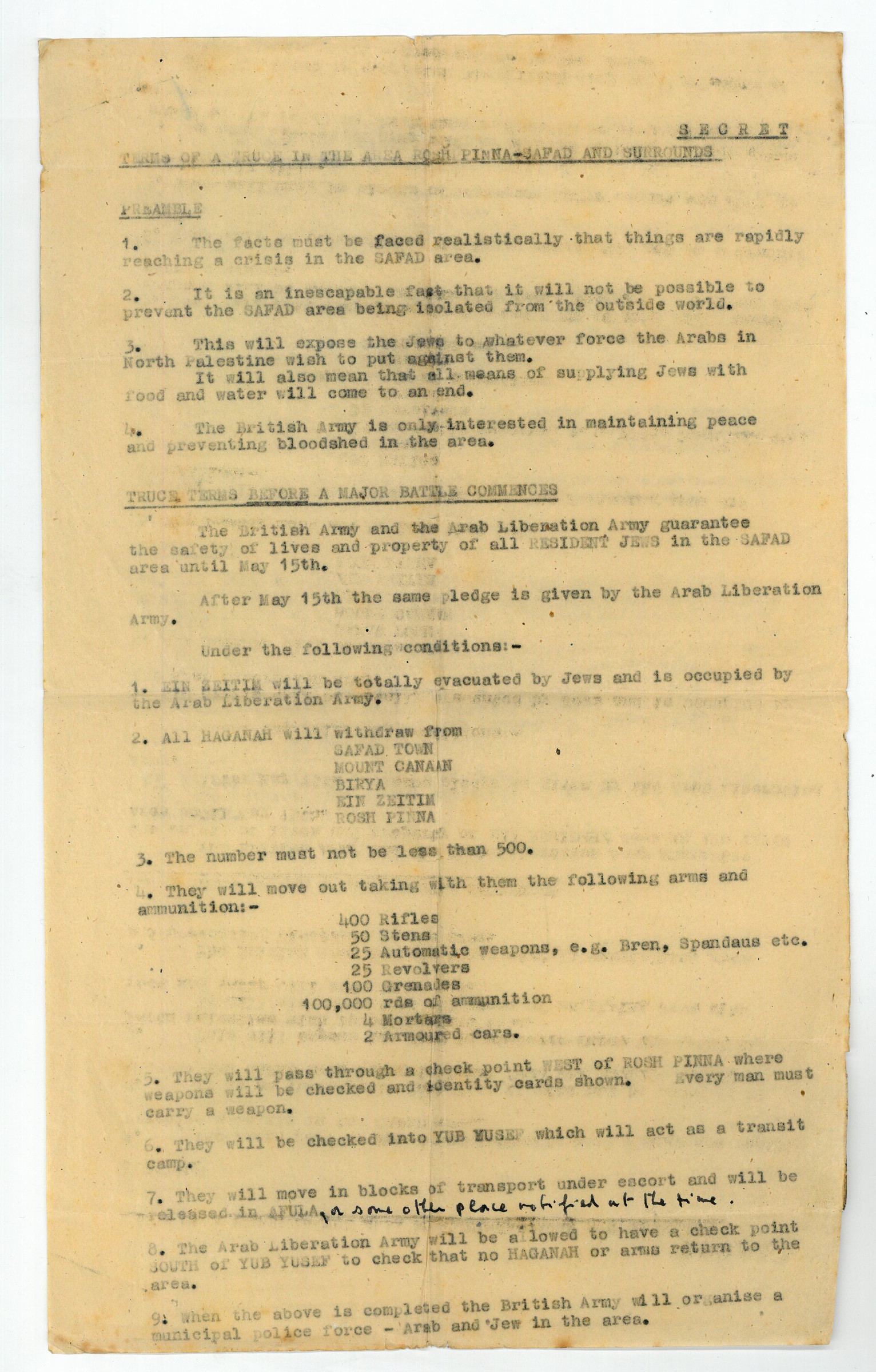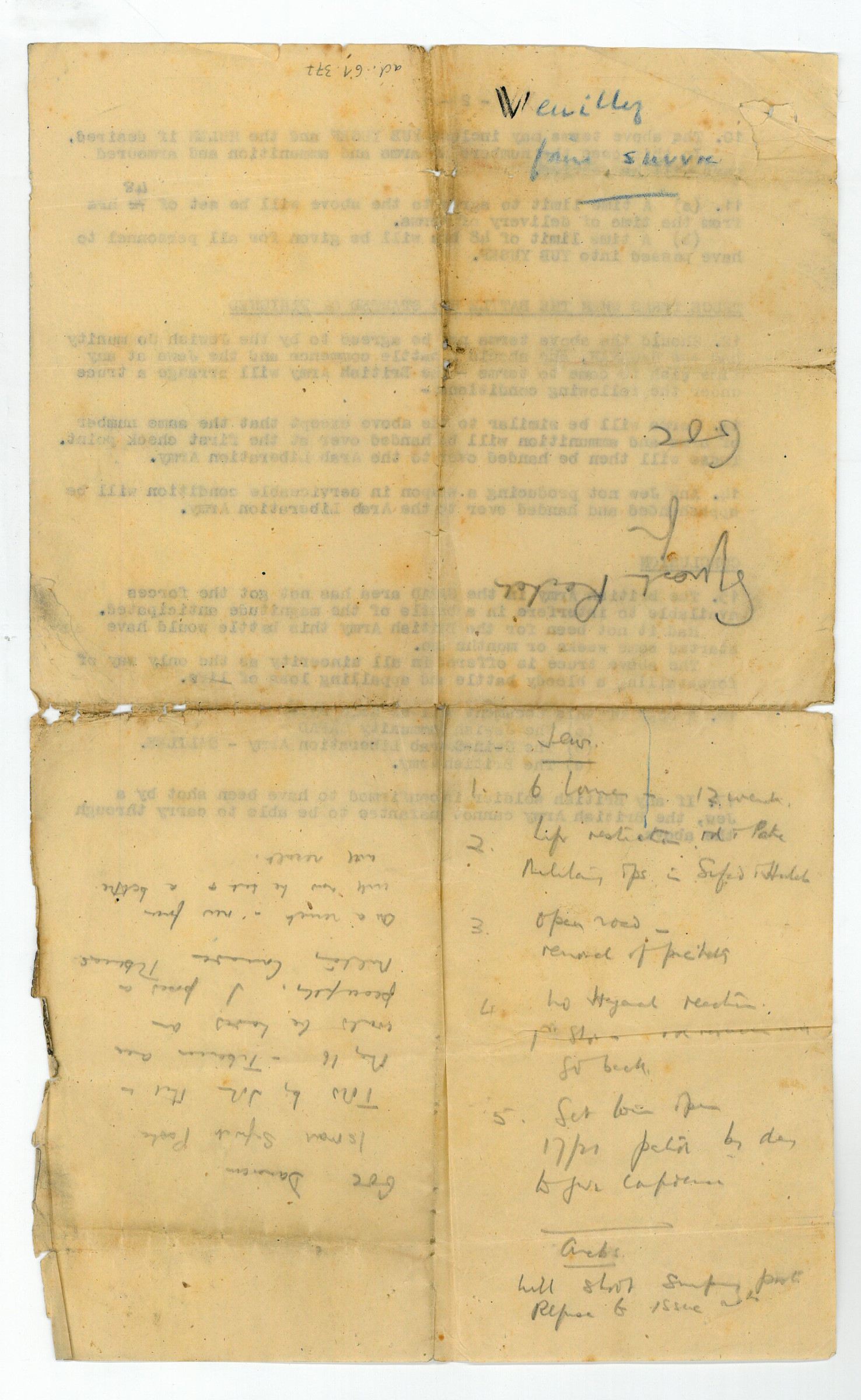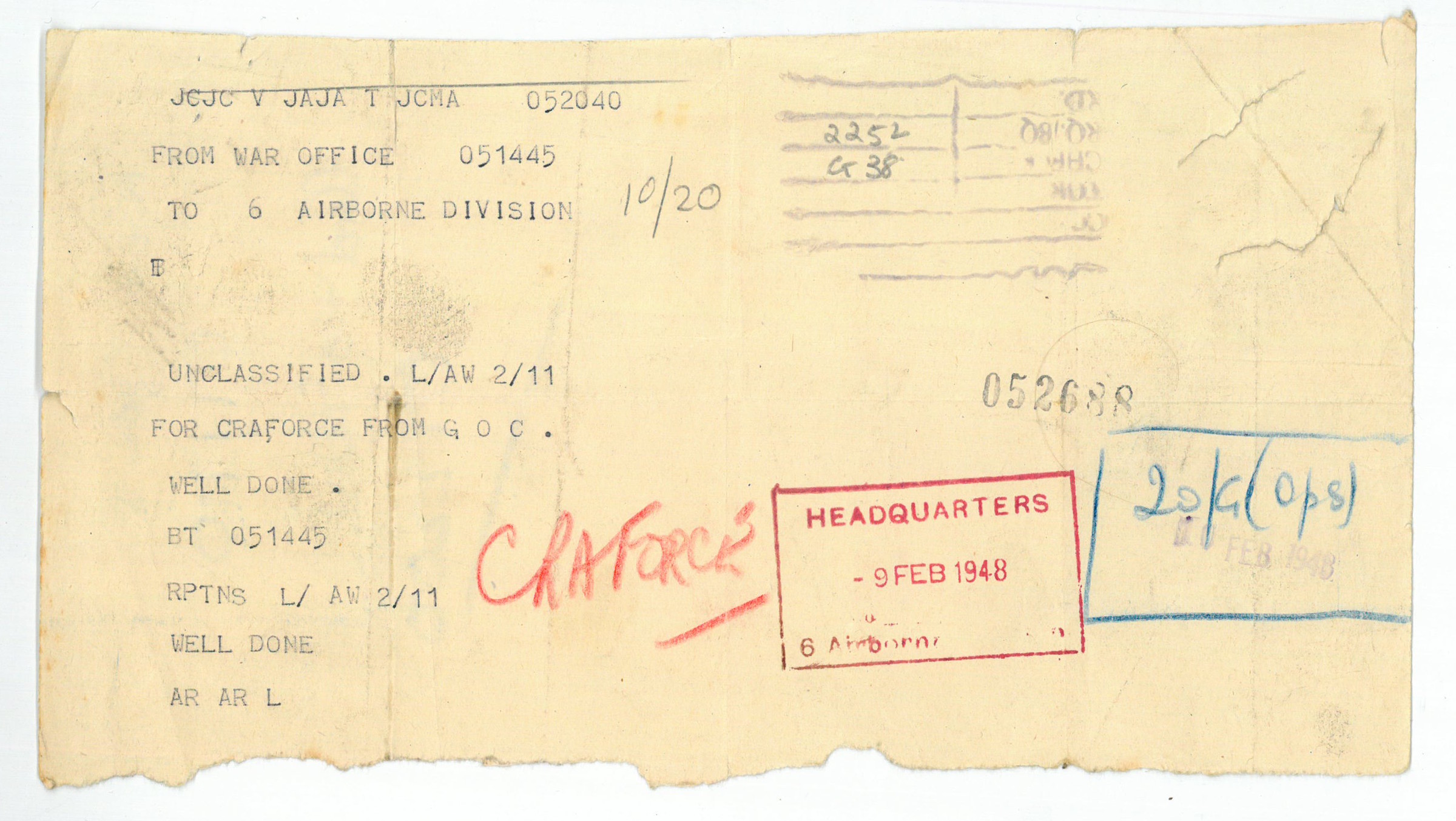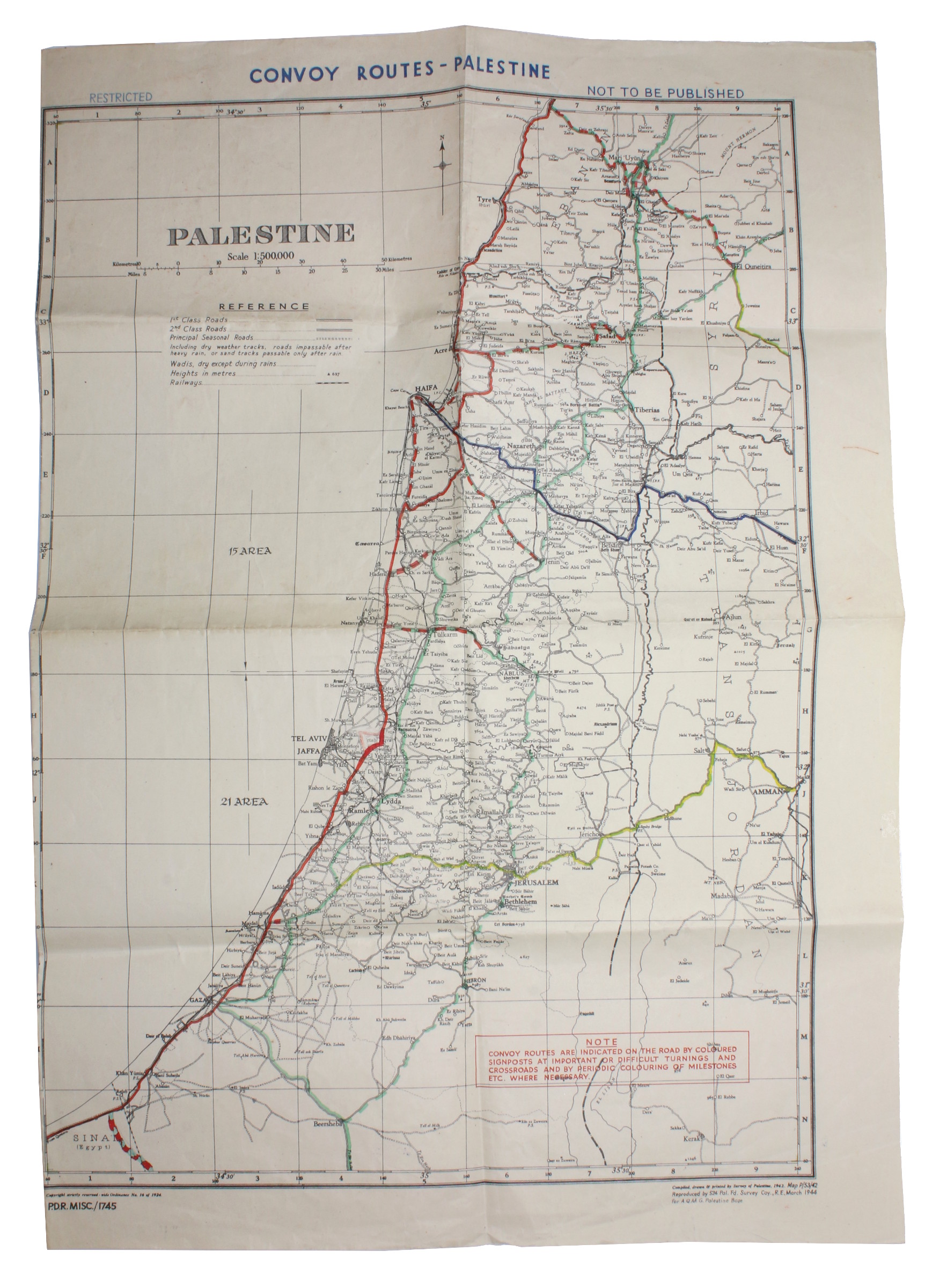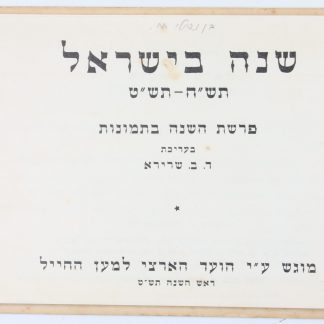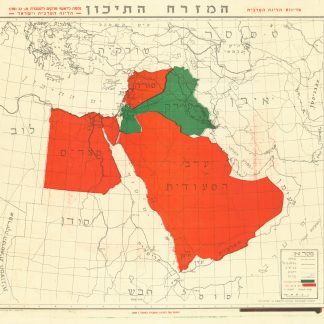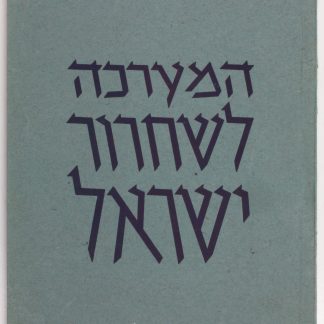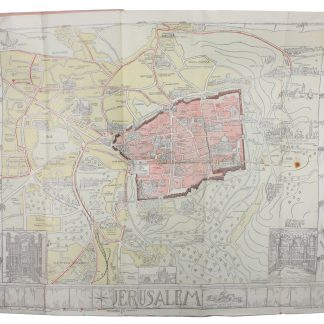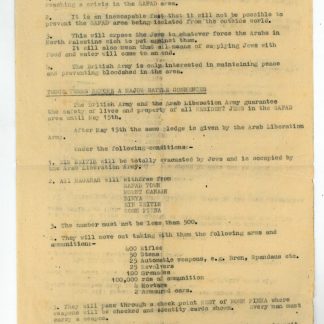The final days of Mandate Palestine in secret military documents
British military documents from Mandate Palestine.
Map of convoy routes in Palestine printed in black and white and colour, with hand-painted edits, 595 x 475 mm. Together with 2 ff. of typewritten leaves with manuscript notes and 1 telegram.
€ 2,500.00
Unique original British military documents, partly typed and partly manuscript, including a map with hand-drawn additions from the fall of British Mandate Palestine and the civil war which led to the 1948 Arab-Israeli War and the establishment of Israel.
Marked "RESTRICTED" and "NOT TO BE PUBLISHED," the map shows the key strategic British convoy routes out of Palestine, hand drawn and colour-coded. Two typewriter pages marked "SECRET" dictate, with inked manuscript edits in a contemporary hand, the terms of a proposed truce "in the area of Rosh Pinna-Safad and Surrounds". Safad (and the nearby settlement of Rosh Pinna) were major points of fighting and strategically important points for both Haganah and the Arab Liberation Army, the two main combatents as British colonial power waned. On the reverse of the second page is a pencilled manuscript note with intriguing further details on British policy in the Northeast. Finally, an official telegram from the War Office to the 6th Airborne Division, stamped 9 February 1948, reads, "For CRAFORCE from GOC [General Officer Commanding]. Well done". Craforce was an ad-hoc collection of several divisions tasked with breaking up battles between Arab and Haganah forces; their commander was Royal Artillery Brigadier Cyril Harry Colquhoun (1903-96). The 6th Airborne Division, praised by the War Office, had been acting as a military police presence in Palestine for years, but would be disbanded within a few months.
The typed truce conditions begin, "The facts must be faced realistically that things are rapidly reaching a crisis in the SAFAD area. It is inescapable fact that it will not be possible to prevent the SAFAD area from being isolated from the outside world. This will expose the Jews to whatever force the Arabs in North Palestine wish to put against them. It will also mean that all means of supplying Jews with food and water will come to an end. The British Army is only interested in maintaining peace and preventing bloodshed in the area". The British then set out truce terms to be met by Haganah, the Zionist paramilitary force which would become the IDF, including evacuation of Safad and surrender of arms before a May 15th deadline. The handwritten notes on the reverse, though difficult to parse, add an intriguing glimpse into the mindset of the British, and their plans for dealing with both Jewish and Arab combatants in the region, specifically in the city of Tiberias. Indeed, it would be the British who would evacuate Safad and Tiberias a month before their own deadline, in April, spelling the end of the Mandate set up at the close of the First World War.
Gentle wear, some rubbing and fading to all but map, with remains bright and clean. Together, this collection provides key primary sources for the history of the 1948 Arab-Israeli War, post-WWII British military strategy, and the end of Mandate Palestine.

